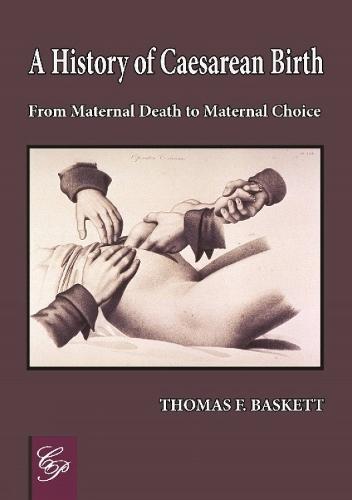Overview
This book traces the evolution of caesarean delivery from postmortem ritual to the most commonly performed operation on women worldwide: from religious and legal edicts to the controversy of caesarean birth by maternal choice.
Full Product Details
Author: Thomas F Baskett, MB, FRCS(C) FRCS(Ed) FRCOG FACOG
Publisher: Clinical Press Ltd
Imprint: Clinical Press Ltd
Weight: 0.450kg
ISBN: 9781854570659
ISBN 10: 185457065
Pages: 196
Publication Date: 22 March 2017
Audience:
General/trade
,
General
Format: Paperback
Publisher's Status: Active
Availability: Available To Order

We have confirmation that this item is in stock with the supplier. It will be ordered in for you and dispatched immediately.
Reviews
I would urge every obstetrician to read this book and digest the true history of the procedure and its evolution to current day practice. -- Sir Sabaratam Arulkumaran, Past President, British Medical Association BMA, Past President, Royal College of Obstetricians and Gynaecologists RCOG and Past President, International Federation of Gynaecology and Obstetrics FIGO A History of Caesarean Birth is a must read for all people working in health care who are interested in the history of medicine... and that should mean all of them! -- Lois TuttonPresident of the Bristol Medico-Historical Society, and Past President of the Bristol Medico Chirurigical Society
I would urge every obstetrician to read this book and digest the true history of the procedure and its evolution to current day practice. -- Sir Sabaratam Arulkumaran, Past President, British Medical Association BMA, Past President, Royal College of Obstetricians & Gynaecologists RCOG & Past President, International Federation of Gynaecology and Obstetrics FIGO A History of Caesarean Birth is a must read for all people working in health care who are interested in the history of medicine... and that should mean all of them! -- Lois TuttonPresident of the Bristol Medico-Historical Society & Past President of the Bristol Medico Chirurigical Society
I would urge every obstetrician to read this book and digest the true history of the procedure and its evolution to current day practice. -- Sir Sabaratam Arulkumaran, Past President, British Medical Association BMA, Past President, Royal College of Obstetricians & Gynaecologists RCOG & Past President, International Federation of Gynaecology and Obstetrics FIGO A History of Caesarean Birth is a must read for all people working in health care who are interested in the history of medicine... and that should mean all of them! -- Lois TuttonPresident of the Bristol Medico-Historical Society & Past President of the Bristol Medico Chirurigical Society This book takes on a challenging task, giving a comprehensive treatise on the origins, history, and present state of Caesarean Section in the broad spectrum of delivery options for women. He subtitles it From Maternal Death to Maternal Choice , a stark reminder of where we have come from and the present state of play. I enjoyed reading this book - it is very well referenced and researched, and while it only has just under 200 pages, it encompasses a wide range of the history of Caesarean section delivery - from earliest references, through to the naming of the procedure, to individuals in Shakespeare's works who might have been so born (Julius Caesar and Macduff if you are interested). I particularly enjoyed Chapter 4 on self performed Caesarean sections. These are documented meticulously yet in a fresh manner, and you wonder how these could even have happened. They were mostly in younger women in straightened circumstances, and these are not mythological or lost in mists of time. One case, reported in 2004 in the Int. J. Obstet Gynecol, related the tale of a woman in her 9th pregnancy who, with a sharp kitchen knife delivered herself of a baby boy, and all her intestines poured out. Her eldest child fetched a nurse who stitched the skin having replaced the intestines, and then arranged for a 12 hour truck ride to take her to hospital to have it repaired properly. The baby thrived, apparently. Anecdotes like these bring the book to life, and make it an enjoyable read. Tales of the first successful survival of the mother and baby following a section in 1889 from the Rotunda hospital (where my eldest child was born 100 years later) make the gap between some of the mythology of the first chapter and today's reality a very narrow one. - David Cahill, Consultant Gynaecologist, St Michael's Hospital, Bristol
Author Information
Thomas F. Baskett MB, FRCS(C) FRCS(Ed) FRCOG FACOG, Dalhousie University, Halifax, Nova Scotia, Canada



